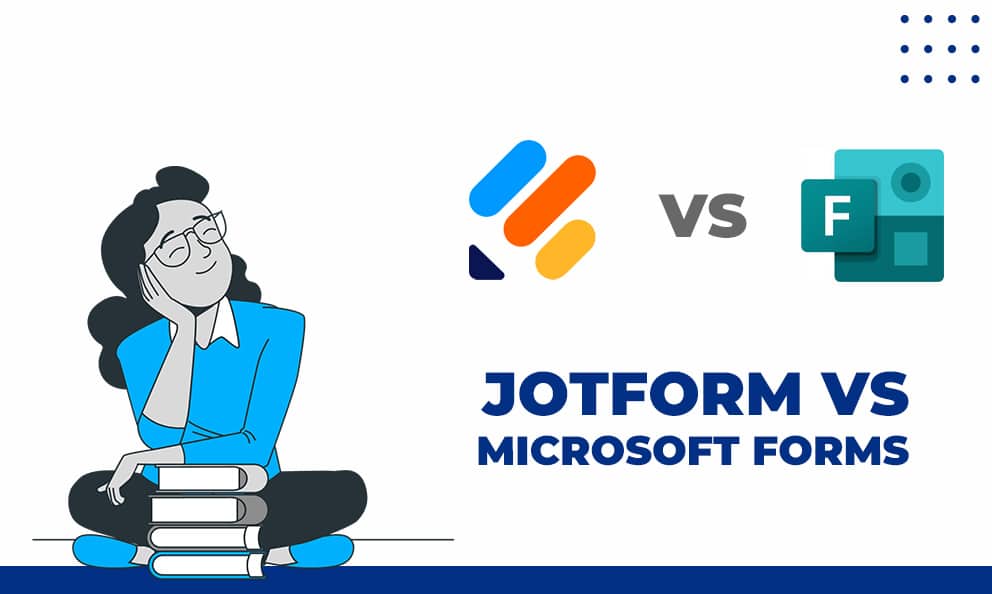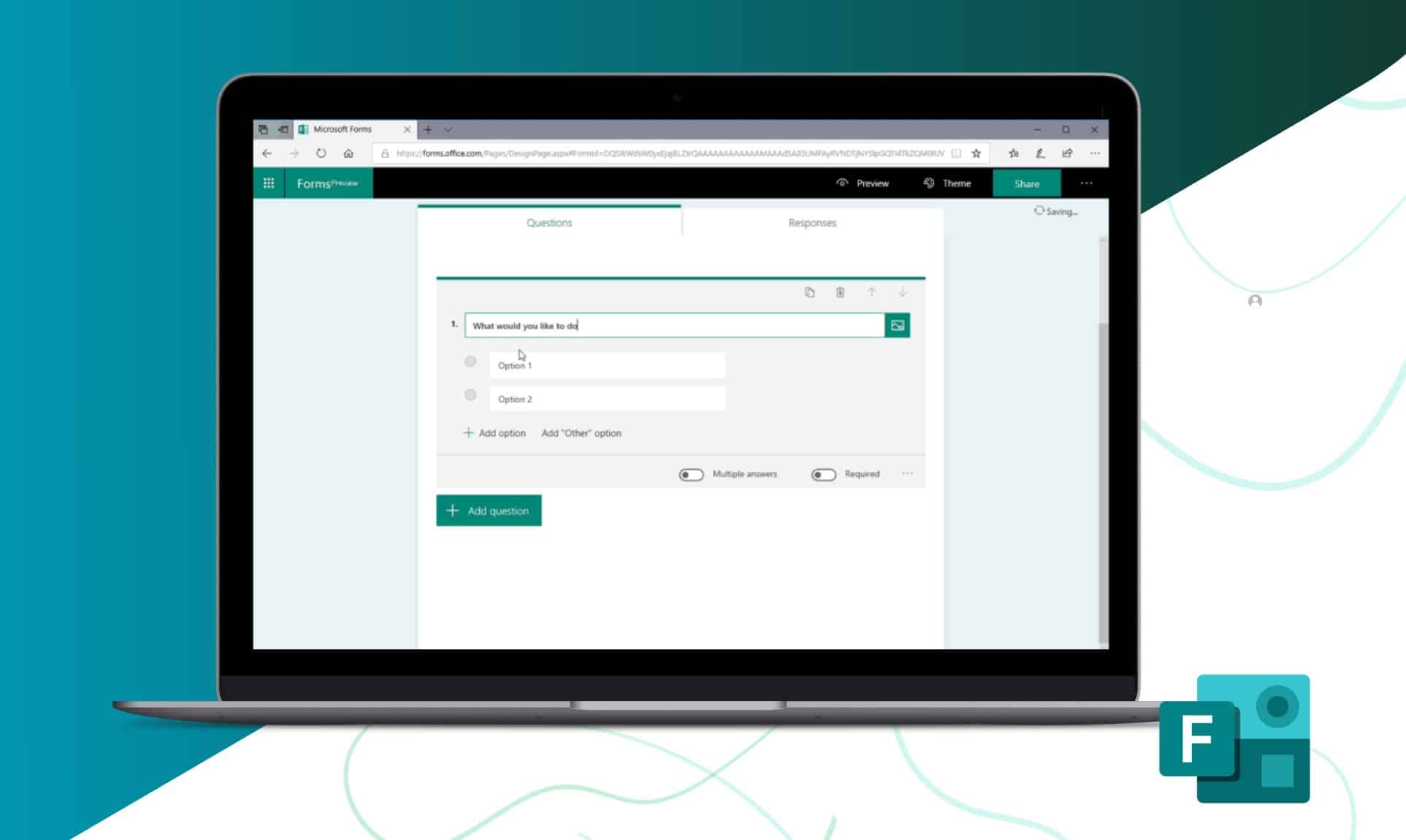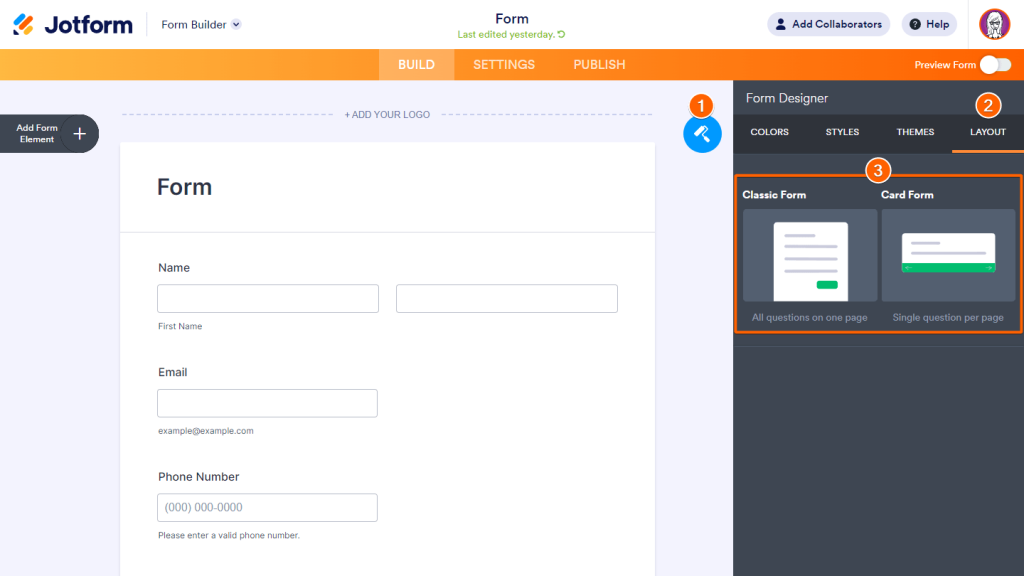
Collecting and analyzing data is essential for the success of any marketing strategy. Online forms play a crucial role in this process, allowing businesses to gather valuable information directly from their customers and prospects. With this in mind, we have developed a comparative article between two important tools in this field: Jotform vs Microsoft Forms.
We have compiled basic information comparing these two platforms to help you determine which one best suits your needs. Here, you’ll find the main advantages of each and how they perform against each other in key aspects like pricing and features. We hope you find it helpful!
About Jotform
Jotform is an online platform for creating customized forms and surveys. Its intuitive interface and various features cater to any industry. With 18 years of experience, its intuitive interface and platform offer features for a diverse range of users.
About Microsoft Forms
Microsoft Forms is an online survey creator that is part of the tools offered in Office 365. It specializes in creating questionnaires, forms, and surveys easily and intuitively.
JotForm vs Microsoft Forms: Key Differences
Below, we list the main differences in a comparison where we evaluate the critical points between both platforms.
Customization and Features
Customizing your forms is a basic function that every business desires today. Most platforms offer the ability to modify forms according to user preferences. Still, these two competitors have a few important differences and extra features to consider when choosing the tool to help you create your next online forms.
Jotform excels in customization. It offers extensive design flexibility, allowing users to adjust everything from themes to CSS for more complex forms. Jotform also supports advanced features like conditional logic, payment processing, and over 100 integrations, making it ideal for businesses that need detailed and highly functional forms.
Microsoft Forms offers more basic customization options, focusing on simplicity and ease of use. While it integrates well with other Microsoft 365 apps (like Excel and SharePoint), it lacks some of the more advanced features found in Jotform. It suits users who create straightforward surveys, quizzes, or polls without deep customization.

Ease of Use
The learning curve between these two platforms can differ, especially for new users unfamiliar with online form creators.
Microsoft Forms is highly user-friendly, especially for those familiar with Microsoft products. Its drag-and-drop interface and straightforward design make it easy for beginners to create forms quickly.
Jotform also has a user-friendly interface, but due to its advanced features, the learning curve for beginners might be steeper.
Both can present challenges when integrating them into your current processes. However, both platforms offer extensive help files and tutorials, making the adoption process easier than you might expect.
Templates and Integrations
If you’re looking for a point of differentiation between these platforms, look no further than each platform’s templates and integrations.
Jotform provides a vast library of over 10,000 templates, catering to various industries and use cases. It also integrates with numerous third-party apps, including CRM systems like Salesforce and marketing tools like Mailchimp.
Microsoft Forms offers a limited selection of templates and primarily integrates within the Microsoft ecosystem, such as Office 365 and Power Automate.
Pricing
Another important differentiator is undoubtedly the price. In this case, you may get more value from Microsoft Forms due to its integration with the entire suite of Microsoft products. However, if you’re looking for a specialized tool with good support, Jotform might become the ideal option for your projects.
Jotform has a free plan, but it’s limited to 5 forms and 100 monthly submissions. Paid plans start at $34/month (billed annually) and offer more features, with the highest tier providing extensive capabilities for $99/month.
Microsoft Forms is included with most Microsoft 365 subscriptions, making it a cost-effective option for those already using Microsoft products. Standalone pricing starts as low as $5.49 per user per month.
Main Disadvantages of Using Jotform or Microsoft Forms
Earlier, we listed the main advantages to distinguish each platform clearly, but we also believe it’s important to mention their weaknesses so you can consider them when making your final decision.
Disadvantages of Microsoft Forms
Although it is a robust product with various integration options with other Microsoft 365 suite tools, Microsoft Forms has some weaknesses that are important to consider.
Basic Analysis: Microsoft Forms needs more tools to analyze or visualize the information collected in your forms. So, if you want to gain insights from this data, it’s ideal to export it to another platform like MS Excel, which, while powerful, also involves a significant learning curve if you want truly effective visualizations. So, this is a point to consider if you want to analyze the collected data.
Few Advanced Questions: In Microsoft Forms, you’ll find all the basic questions you need to create a form, such as open text, numeric, email, etc. However, if you have a specific need that requires advanced functions like scoring logic, data validation, or more interactive questions, Microsoft Forms might fall short.
Integrations and Online Collaboration: Although we already mentioned the limited integration with third-party platforms, it’s also important to highlight that it doesn’t have many collaboration options like multi-accounts or simultaneous work. This could be problematic if you have a large team and must provide constant feedback or collaborate with them to create these forms.
Disadvantages of Jotform
Being a more specialized platform for creating forms and surveys, Jotform has many strengths, such as its interface, integrations, and advanced options. However, it also has some weaknesses that are important to consider.
Price: We already mentioned this earlier in the pricing comparison, but we consider it important to recommend reviewing the plan you want and the cost-benefit you’ll get when purchasing a plan. If you encounter limitations or need a feature, you’ll have to pay more.
Customer Service: While it’s true that Microsoft Forms also doesn’t offer personalized customer service, Jotform, being a paid platform, could improve by offering personalized human attention to its customers.

Jotform vs. Microsoft Forms: Who’s the Winner?
Okay, it’s time to choose a winner in this duel between Jotform vs Microsoft Forms. While we could say that Jotform has more points in favor in various aspects of this comparison, that doesn’t mean Microsoft Forms is a bad tool or that you shouldn’t choose it for your next project.
To be specific, we believe you should:
- Choose Jotform if you need highly customizable forms with advanced features and are willing to invest in a more premium tool.
- Opt for Microsoft Forms if you require a simpler, more budget-friendly solution integrated with the Microsoft ecosystem, ideal for basic surveys and quizzes.
Considering the aspects we mentioned earlier, we believe you’ll be able to reach a conclusion that truly meets your expectations. However, it’s important to remember something: More options are on the market!
QuestionPro is a balanced option that might be the ideal tool for your projects and challenges. It’s a powerful form builder that offers various tools across various industries and can adapt to any challenge.
With it, you can create anything from simple quizzes to advanced customer satisfaction research projects using its various suites and features.
If you have a specific need, we’re confident we could be an option for you, so we invite you to schedule a meeting with one of our experts to clarify any doubts you may have without any commitment.







